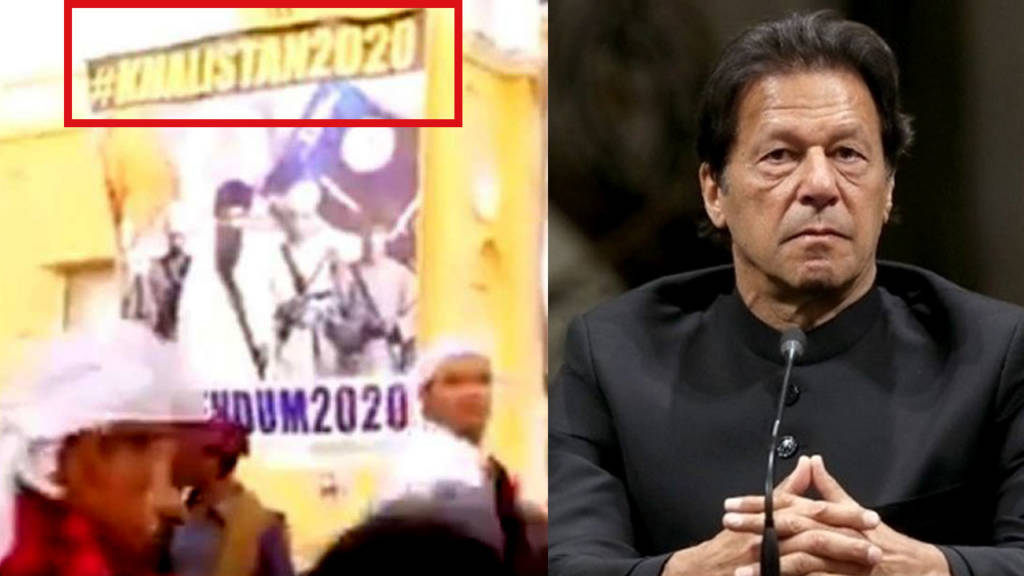The Kartarpur Corridor, which PM Modi had likened with the fall of Berlin Wall last year, is now being blatantly used by Pakistan for reviving the Khalistan movement in the Indian state of Punjab. The signs of Pakistan hatching such a sinister conspiracy becomes clear from the recent events ahead of the inauguration and the 550th birth anniversary of Guru Nanak Dev. Pakistan’s Ministry of Information and Broadcasting released a 4-minute video clip to mark the opening of the Kartarpur Corridor.
The video is replete with anti-India sentiments and openly propagates a pro-Khalistan agenda. Featuring a poster of three separatists- Jarnail Singh Bhindranwale, Major General Shabeg Singh and Amrik Singh Khalsa, in the backdrop with “Khalistan 2020” written on it, in a clear reference to the “Referendum 2020”, a publicity stunt by a handful of pro-Khalistan secessionism supporters.
Bhindranwale was the leader of the Khalistan armed movement that sought for the secession of Punjab and creation of a separate Sikh state of Khalistan. He led a violent period of insurgency which caused thousands of deaths in Punjab in the 70s and 80s. Major General Shahbeg Singh was an Indian Army officer who was stripped of his rank on charges of corruption, just before his retirement. Thereafter, he had joined the Khalistan movement in 1984, and was a military adviser of Bhindranwale. Amrik Singh Khalsa was a Khalistani student leader and the president of the All India Sikh Students Federation (AISSD), a body which has now been banned.
All three of them were killed during the Operation Bluestar carried out in June 1984. The video released by Pakistan, therefore, celebrates those who were at the forefront of the Khalistani movement in the 1980s.
However, it is not only this video which points out Pakistan’s objectionable objectives vis-a-vis the Kartarpur Corridor. It is pertinent to mention here that only a few days ago, intelligence agencies reportedly spotted terrorist training activities in the Narowal district of Pakistan’s Punjab province, the same district in which the Kartarpur Sahib Gurudwara is also situated.
According to intelligence sources, terrorist training camps are situated at Muridke, Shakargarh, and Narowal in the Punjab province of Pakistan, where “a substantial number of men and women are reportedly camping and undergoing training”. What further exposes Pakistan’s nefarious designs is the fact that an intelligence report has also warned that a group of terrorists has been spotted infiltrating near the Dera Baba Nanak area of Punjab. This is where the Kartarpur Corridor inauguration event is also to be held on November 9.
Earlier a Hindustan Times report had stated that the security agencies see the last-minute visa exemptions by Pakistan for access to the Kartarpur Gurudwara as part of a plan to revive militancy in the state of Punjab. The Pakistan government waived off two requirements, producing a passport and sending an advance application, to visit the holy Shrine just for the Sikh community, deliberately ignoring other followers of Guru Nanak Dev, including those among Hindus.
As per HT, two officials spoke about how the offer of visa-free access was part of Pakistan’s sinister plans. One of the officials, speaking on condition of anonymity said that Pakistan’s sudden change of heart “is a clear attempt to portray a false-sense of bonhomie for the Sikhs”. He added, “In particular, they want to target the youth.” Retired IPS officer Avinash Mohanani, who has worked at the IB during his career said, “No passport means there is no record of who went across. This appears to be the revival of [Punjab insurgency for separate] Khalistan 2.0 plan.”
It must be noted that a few months ago former Pakistan Army chief, General Mirza Aslam Beg, had gone on to the extent of openly declaring that Pakistan would use the Kartarpur corridor for Khalistan terror. He had openly said, “Pakistan army and the government should create trouble for India through Khalistan movement.”
Sikhs for Justice (SJF), a US-based body which is running a secessionist campaign to separate the state of Punjab from India reportedly at the behest of the ISI, had also called the Kartarpur corridor, a ‘bridge to Khalistan’. As stated by Punjab CM Amarinder Singh, Pakistan’s ‘hidden agenda’ with respect to the Kartarpur Corridor was always clear. Now, India must remain careful. It is clear that through the Kartarpur Corridor, Pakistan never wanted to extend an olive branch, rather it wants to foment terror in Punjab and drag the Indian state back into the days of insurgency. Pakistan which continues to exploit the Sikh minority within Pakistan, is now trying to entice the Indian Sikhs out of the mainstream, and tempt them to join the fringe elements, though it does not even stand an outside chance in its nefarious designs.
Ever since the Modi government came at the helm of affairs, it has taken up an aggressive strategy in Kashmir which has come as a setback to Pakistan and terror outfits sponsored by it. After the abrogation of Article 370, and continuous diplomatic setbacks for Pakistan, it has become amply clear that it is virtually beyond the reach of Pakistan to continue fomenting terror in the newly carved out Union Territory. However, Pakistan, which remains anxious to persist with its policy of bleeding India through a thousand cuts seems to have set its focus on a renewed agenda and that is to spread terror in the Indian state of Punjab.
While the Indian state of Punjab faces no imminent threat of insurgency given the strong association of the Sikh community with Indian nationalism, and lack of any palpable sub-nationalism in Punjab, India must maintain vigil against Pakistan’s attempts to shift its terror factories and training camps towards the Punjab border.
To vitiate the atmosphere in Punjab, Pakistan might shift its geopolitical focus from Kashmir to Punjab and attempt infiltration of terrorists into Punjab to foment terrorism in the state as part of its old strategy to bleed India through a thousand cuts.
